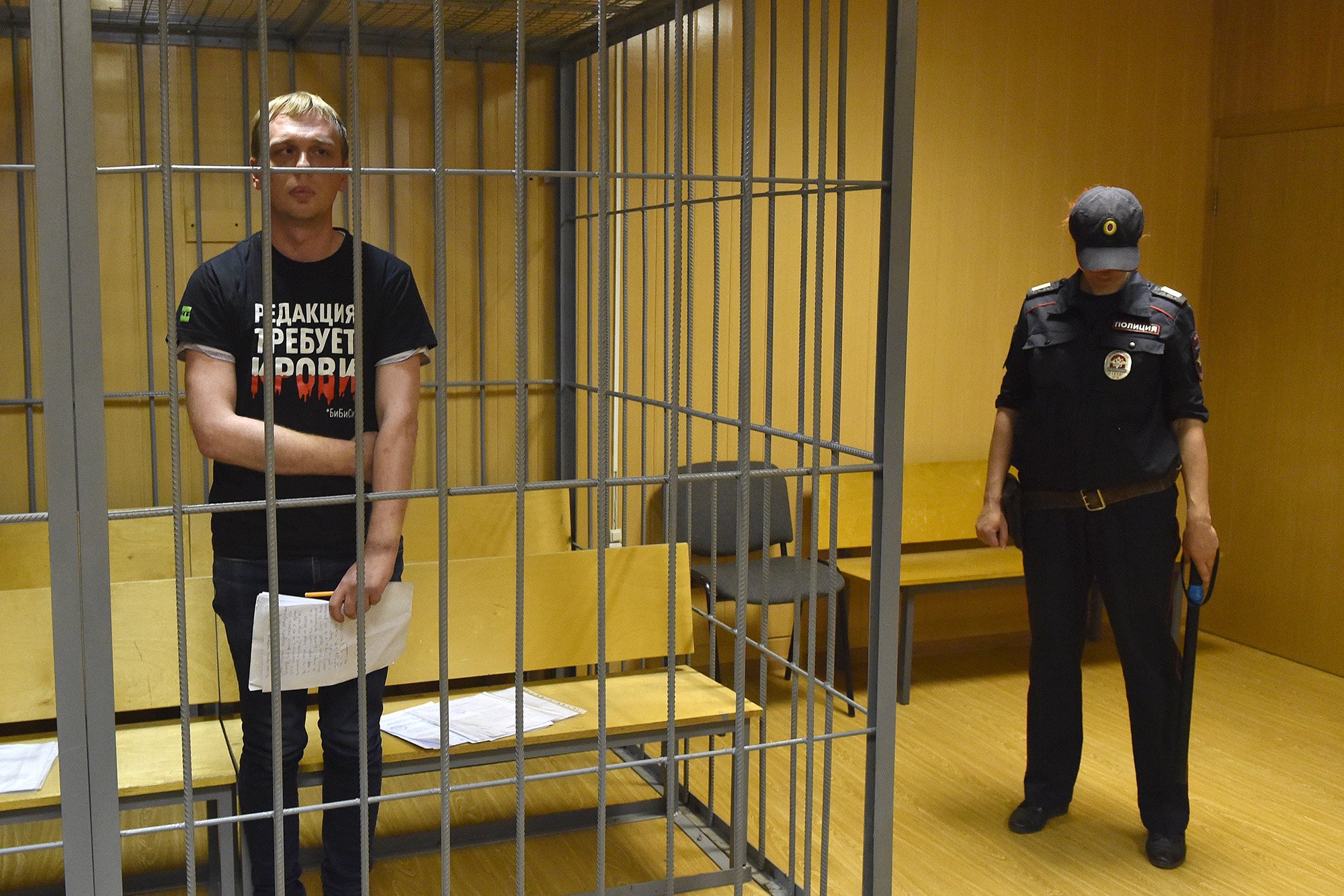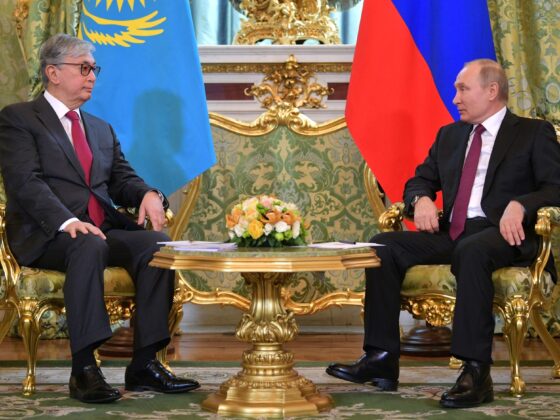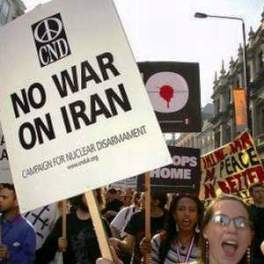
Meduza investigative journalist Ivan Golunov was detained on trumped-up drug charges. The case against him was closed after an outpouring of public support.
► On a few recent occasions, the Kremlin has conceded to street protests and chose to respond to public demands rather than resort to hard repressions. Is this shift likely to last, or is it a mere tactical maneuver?
The increase in political and economic grievances and rising protest sentiments in Russia present the Kremlin with a dilemma. On the one hand, the protracted decline (or, at best, stagnation) of Russians’ real incomes that has lasted for five straight years makes it more and more difficult to control the people’s political behavior. On the other hand, these challenges create a temptation for the Kremlin to launch large-scale coercion and repressions. Still, this temptation (at least, as of yet) has not become a reality. Indeed, the Kremlin has not resorted to mass long-term imprisonments, large-scale police violence, the full closure of semi-free news outlets, a total ban of uncontrolled social media, or an elimination of formally competitive elections. Instead, the Russian regime has relied on a menu of manipulations, including cooptation of potentially disloyal agents, selective and partial appeasements of protests, the use of “divide-and-rule” tactics vis-à-vis the regime’s rivals, and rather selective repressions. To what extent is the policy of “velvet gloves” control relevant for the Kremlin? Is Russia likely to switch to the “iron fist” model typical of many authoritarian regimes?
To Beat or Not to Beat?
Why does the practice of “soft” political control in Russia prevail over “hard” and brutal coercion enforced by its post-Soviet neighbors, such as Azerbaijan or Tajikistan? The answer is two-fold. First, for electoral authoritarian regimes, a rational-legal legitimacy is vitally important, and the popular approval of Russia’s leader, Vladimir Putin, is the cornerstone of maintaining this status quo. A switch to full-fledged coercion and the abandonment of the policy of highly manipulated, yet competitive elections is a one-way ticket, and the Kremlin understands its consequences. Second, opting for an “iron fist” model may have the side effect of empowering the government’s coercive apparatus. Should this occur, it can make redundant the political managers and strip them of their positions as well as call in question the very nature of personalistic authoritarianism. Once mass repressions have been launched, the national leader runs the risk of becoming a hostage of the men in uniform who control the coercive apparatus. At best, an authoritarian leader may be severely constrained, and in the worst-case scenario, he may be even ousted by his own siloviki entourage. Sticking with manipulative control instead of switching to the “iron fist” model appears to be a plausible alternative for the Kremlin. But what went wrong with this model recently, and what shall we expect in the near future?That is the question, relevant for many authoritarian regimes across the globe, and Russia is hardly an exception.
|
“Although the scope of repressions has obviously grown since 2012, the number of victims in Russia is still low by the standards of autocracies worldwide.” |
In other words, what is the role of violence in maintaining authoritarian rule, and to what extent does such a regime rely on repressions? The time of large-scale state-directed mass violence (ranging from the Soviet Gulag to the genocide perpetuated by the Khmer Rouge) is largely over, and today’s autocrats need more sophisticated mechanisms of control over the public. This is particularly true for authoritarian regimes which tend to employ democratic institutions—elections, parties, and legislatures—for the purposes of legitimation and cooptation. Russia is one out of many such regimes commonly described as “electoral authoritarianism” (in fact, many of them are products of failed democratization). The political equilibrium of these regimes, in the words of Adam Przeworski, “rests on lies, fear, and economic prosperity”. As long as the economy is booming (as was the case in Russia in the 2000s), such regimes easily buy its citizens’ loyalty and co-opt some of its critics. However, when economic prosperity is gone, lies and fear become the regime’s major instruments. In the 2010s, propaganda and threats of repressions against the regime’s real or potential rivals have become tools of choice for the Kremlin’s political managers anxious to keep domestic unrest under control. They still kept the levers of hard power in their hands, albeit covered by “velvet gloves,” and did not resort to large-scale violence. Although the scope of repressions has obviously grown since 2012, the number of victims in Russia is still low by the standards of autocracies worldwide. For instance, the number of political prisoners amounts to the hundreds, not thousands. Indeed, the Kremlin prefers to rely upon intimidation. It demonstrates readiness to use force against disloyal Russians along with arbitrary (yet not overused) repressions of activists, bloggers, or just random individuals.
Shrinking Room for Maneuver
Since 2018, public disapproval of the state of affairs in Russia has steadily increased. A series of defeats of Kremlin-sponsored incumbents in sub-national elections in the fall of 2018 complete with the rise of environmental and socio-economic protests in various parts of the country and the declining trend of popular trust to Putin (fueled by the announced increase of the retirement age) were apparently seen in the Kremlin as major risks for the “moderate,” or ”soft” control model. Some observers even predicted that state-society relations in Russia might evolve as a “revolutionary situation,” and create fertile ground for a future regime change. Whatever one thinks about the feasibility of such a scenario, one should also consider that the Kremlin’s political managers are flexible and have learned from the experience of the Russian public opinion dynamics during political unrest in 2011-2012, as well as from the failures of certain autocrats, such as Viktor Yanukovych in Ukraine. The Kremlin tends to satisfy certain popular demands when public dissatisfaction appears to be strong enough, and the Kremlin’s minor concessions do not undermine the regime’s stability. The Kremlin managers also make sure to prevent binary opposition of “Russians against Putin” in the eyes of the public and, where possible, shift the blame to sub-national authorities. Finally, they carefully, and often successfully, use the regime’s loyalists as possible buffers between the Kremlin and its critics, thus avoiding the trap of open confrontation with the regime’s staunch rivals. The nomination of politically neutral regime-backed candidates instead of the unpopular United Russia functionaries for the Moscow City Duma elections, scheduled for September 2019, is clear evidence of such tactics.
|
“In response to the outpouring of public support for Golunov the Kremlin generated additional support from loyalists on state TV, closed the case against Golunov and fired two police generals.” |
As of yet, this “tactical retreat” and selective appeasement of public discontent bore some fruit to the Kremlin or, at least, helped it to avoid serious political losses. Despite the electoral failures of incumbent governors in the fall of 2018, the newly-elected regional leaders from “systemic” parties, such as KPRF or LDPR, do not pose any threat to the central government. Several instances of public protests, such as the one against the handover of St. Petersburg St. Isaac’s Cathedral to the Russian Orthodox Church or against the construction of a church in the place of a park in the center of Yekaterinburg, were effectively localized, and regional governments (not the Kremlin) took responsibility for resolving these crises. Even in the most outrageous case of Meduza investigative journalist Ivan Golunov’s detention on trumped-up drug charges, the Kremlin managed to avoid a broad protest rally against the lawlessness of the police and security apparatus. In response to the outpouring of public support for Golunov the Kremlin generated additional support from loyalists on state TV, closed the case against Golunov and fired two police generals. In the end, only a relatively small constituency of Moscow liberal dissenters joined the protest march, which exposed the participants to arbitrary and often brutal treatment by the police. At the same time, the regime has refrained from violence in those cases when the scope of street action exceeded a certain threshold. This happened not only in the above-mentioned Yekaterinburg but also in Arkhangelsk where major protests against the deposit of waste imported from Moscow shook the region. The dispute remains unresolved, and protests continue. In each of these cases, the number of protesters exceeded several thousand people, but their slogans were not anti-Kremlin or anti-Putin. By contrast, brutal suppression of the opposition during the May 1, 2019 demonstration in St. Petersburg targeted several hundred of the usual suspects carrying anti-Putin slogans—who were severely beaten by police.
|
“In the short-term perspective, the Kremlin retains some room for maneuver—as long as the outbreaks of public discontent remain localized and lack a shared anti-regime agenda” |
One might interpret the Kremlin’s response of this kind as a manifestation of “smart authoritarianism.” This approach is similar to that of the Chinese Communist Party which often backs localized and non-politicized protests as a way of controlling sub-national authorities “from below” and portraying the autocratic regime as protecting ordinary people from their local bosses. Such a turn may help to chill out popular dissatisfaction with the regime as well as strengthen the Kremlin political managers in their continuous struggle with the government coercive apparatus. Meanwhile, skeptics may raise doubts about the Kremlin’s capacity to manage public opinion, identify proper targets of protests, and avoid the risks of large-scale anti-regime mobilization. In the short-term perspective, however, the Kremlin retains some room for maneuver—as long as the outbreaks of public discontent remain localized and lack a shared anti-regime agenda, let alone a unified organizational framework. While many of the environmental protests by and large fit the category of “not in my back yard,” their participants are not especially concerned about police lawlessness towards investigative journalists, and the latter are not too keen on their compatriots’ environmental concerns. Also, time is an important factor when it comes to public opinion, and the Kremlin’s political managers may hope, not without reason, that the current downturn of public support may stop or even reverse in one way or another.
The Achilles’ heel of the Kremlin’s political managers lies not in politics, but policy-making. In the medium term, sophisticated manipulations and disinformation campaigns may be effective in managing the public opinion only as long as they are reinforced by economic successes, but the chance of successful socio-economic developments in Russia is currently slim. And even if the Kremlin manages to reach its immediate goals, such as mitigating public protests and securing required election results by different means (large-scale fraud, not excluded) these achievements are likely to be temporary and fragile. This is why, at a certain point, the political tactics pursued by the Kremlin’s political managers may be rejected by Putin in favor of an “iron fist” solution. The question is which of these two strategies of Russian authoritarianism will be more effective in ensuring the regime’s survival.
Vladimir Gel’man is Professor of Political Science at European University in St. Petersburg and University of Helsinki.













